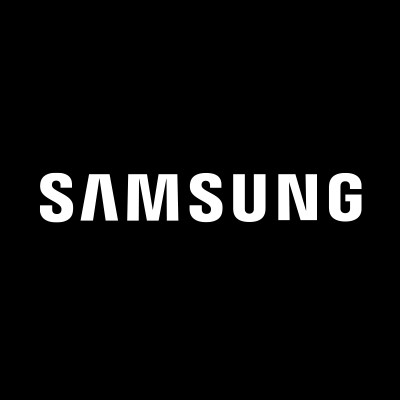The Pulse of Progress: Metro Developments in India
September 12, 2024, 3:34 am

Location: United States, California, San Francisco
Employees: 10001+
Founded date: 1938
Total raised: $6.4B

Location: India, Delhi, New Delhi
Employees: 10001+
Founded date: 1983
Total raised: $53.97M
India's urban landscape is changing. Metro systems are the veins of this transformation, pumping life into congested cities. Kolkata and Mumbai are at the forefront, each with significant projects that promise to reshape public transportation.
Kolkata Metro is undergoing a vital upgrade. The third rail replacement on the Blue Line at Girish Park station is a crucial step. This line, stretching from Dum Dum to Kavi Subhash, is a lifeline for thousands. It’s a busy artery, and the upgrade aims to enhance efficiency and safety. The old rail, worn down by years of service, is being replaced. The new rail will support the growing ridership, ensuring smoother and faster journeys.
The replacement work will take a few weeks. During this time, commuters may experience slight delays. The authorities are working hard to minimize disruptions. They urge passengers to stay informed about timetable changes. This modernization is not just about replacing old parts; it’s about setting a foundation for the future. New trains and improved station facilities are on the horizon. The goal is to create a seamless travel experience.
Meanwhile, Mumbai is gearing up for its own metro revolution. The Mumbai Metro Line 3, an underground corridor, is expected to launch before the upcoming Maharashtra Assembly elections. This line connects key areas, including Colaba, Worli, Dadar, and Bandra, ultimately reaching SEEPZ, a major business hub. It’s a game-changer for a city burdened by traffic.
The completion of Metro 3 has faced hurdles. Funding issues, land acquisition challenges, and environmental concerns have delayed progress. However, with the project nearing completion, the government is eager to showcase its infrastructure achievements. The metro will significantly reduce travel time, cutting commutes between southern and northern Mumbai by nearly half.
Passengers can expect modern amenities. Fully air-conditioned trains, advanced ticketing systems, and well-equipped stations will enhance the travel experience. The metro will also connect with existing lines, creating a web of public transport options. This interconnectedness is vital for a city where every minute counts.
Environmental concerns have loomed large over the project. The cutting of trees in Aarey Forest for the metro depot sparked protests. In response, authorities have revised plans and promised compensatory afforestation. The project is moving forward, balancing development with ecological responsibility.
Both Kolkata and Mumbai are investing in their metro systems. These upgrades are not just about convenience; they are about sustainability. By encouraging public transport use, these metros aim to reduce pollution and traffic congestion. The shift from private vehicles to public transport is crucial for urban health.
As these projects unfold, they signal a broader trend in India. The country is embracing modern infrastructure. The focus is on creating efficient, reliable, and environmentally friendly transport options. This shift is essential for urban centers that are growing rapidly.
The Kolkata Metro's modernization aligns with global standards. It reflects a commitment to improving urban transit. Similarly, Mumbai's Metro Line 3 is a testament to the city’s ambition. Both projects are vital for the future of their respective cities.
In addition to metro developments, the energy sector is also evolving. Tata Power-DDL and Nissin Electric are launching India’s first micro substation. This initiative aims to supply electricity to remote areas. The micro substation will convert high-voltage power to low-voltage electricity for residential use. It’s a step towards ensuring energy access for all.
Moreover, Maruti Suzuki is set to launch its first electric vehicle (EV) with a 500 km range. This mid-size SUV, expected in January 2025, will cater to both Indian and international markets. The automotive industry is shifting gears, embracing electric technology. This move aligns with global trends towards sustainability.
India is also positioning itself as an export hub for lithium-ion batteries. Major companies are entering the market, signaling rapid progress in battery manufacturing. This development is crucial for the EV industry and renewable energy sectors. It showcases India’s potential to become a key player in the global energy landscape.
In conclusion, the pulse of progress in India is strong. Metro systems in Kolkata and Mumbai are set to redefine urban transport. Energy initiatives are paving the way for a sustainable future. As these projects come to fruition, they will not only enhance daily commutes but also contribute to a greener, more connected India. The journey has just begun, and the destination is a brighter, more efficient tomorrow.
Kolkata Metro is undergoing a vital upgrade. The third rail replacement on the Blue Line at Girish Park station is a crucial step. This line, stretching from Dum Dum to Kavi Subhash, is a lifeline for thousands. It’s a busy artery, and the upgrade aims to enhance efficiency and safety. The old rail, worn down by years of service, is being replaced. The new rail will support the growing ridership, ensuring smoother and faster journeys.
The replacement work will take a few weeks. During this time, commuters may experience slight delays. The authorities are working hard to minimize disruptions. They urge passengers to stay informed about timetable changes. This modernization is not just about replacing old parts; it’s about setting a foundation for the future. New trains and improved station facilities are on the horizon. The goal is to create a seamless travel experience.
Meanwhile, Mumbai is gearing up for its own metro revolution. The Mumbai Metro Line 3, an underground corridor, is expected to launch before the upcoming Maharashtra Assembly elections. This line connects key areas, including Colaba, Worli, Dadar, and Bandra, ultimately reaching SEEPZ, a major business hub. It’s a game-changer for a city burdened by traffic.
The completion of Metro 3 has faced hurdles. Funding issues, land acquisition challenges, and environmental concerns have delayed progress. However, with the project nearing completion, the government is eager to showcase its infrastructure achievements. The metro will significantly reduce travel time, cutting commutes between southern and northern Mumbai by nearly half.
Passengers can expect modern amenities. Fully air-conditioned trains, advanced ticketing systems, and well-equipped stations will enhance the travel experience. The metro will also connect with existing lines, creating a web of public transport options. This interconnectedness is vital for a city where every minute counts.
Environmental concerns have loomed large over the project. The cutting of trees in Aarey Forest for the metro depot sparked protests. In response, authorities have revised plans and promised compensatory afforestation. The project is moving forward, balancing development with ecological responsibility.
Both Kolkata and Mumbai are investing in their metro systems. These upgrades are not just about convenience; they are about sustainability. By encouraging public transport use, these metros aim to reduce pollution and traffic congestion. The shift from private vehicles to public transport is crucial for urban health.
As these projects unfold, they signal a broader trend in India. The country is embracing modern infrastructure. The focus is on creating efficient, reliable, and environmentally friendly transport options. This shift is essential for urban centers that are growing rapidly.
The Kolkata Metro's modernization aligns with global standards. It reflects a commitment to improving urban transit. Similarly, Mumbai's Metro Line 3 is a testament to the city’s ambition. Both projects are vital for the future of their respective cities.
In addition to metro developments, the energy sector is also evolving. Tata Power-DDL and Nissin Electric are launching India’s first micro substation. This initiative aims to supply electricity to remote areas. The micro substation will convert high-voltage power to low-voltage electricity for residential use. It’s a step towards ensuring energy access for all.
Moreover, Maruti Suzuki is set to launch its first electric vehicle (EV) with a 500 km range. This mid-size SUV, expected in January 2025, will cater to both Indian and international markets. The automotive industry is shifting gears, embracing electric technology. This move aligns with global trends towards sustainability.
India is also positioning itself as an export hub for lithium-ion batteries. Major companies are entering the market, signaling rapid progress in battery manufacturing. This development is crucial for the EV industry and renewable energy sectors. It showcases India’s potential to become a key player in the global energy landscape.
In conclusion, the pulse of progress in India is strong. Metro systems in Kolkata and Mumbai are set to redefine urban transport. Energy initiatives are paving the way for a sustainable future. As these projects come to fruition, they will not only enhance daily commutes but also contribute to a greener, more connected India. The journey has just begun, and the destination is a brighter, more efficient tomorrow.
